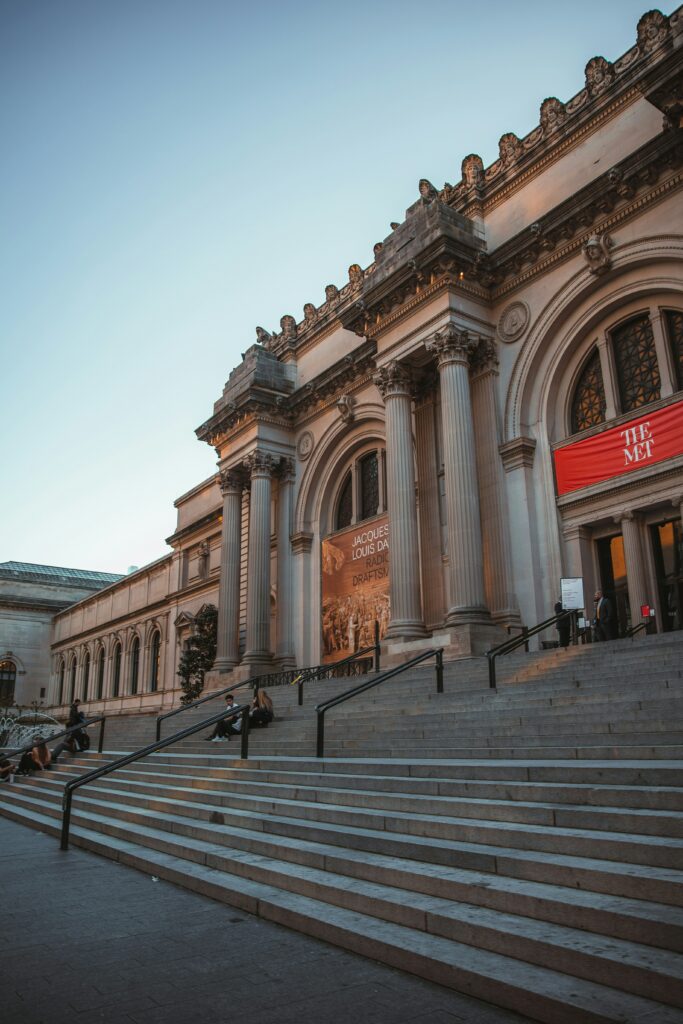The Metropolitan Museum of Art announced The Costume Institute’s spring 2024 exhibition, Sleeping Beauties: Reawakening Fashion. Presented at The Met Fifth Avenue from May 10 through September 2, 2024, the exhibition will feature original research, conservation analysis, and diverse technologies to revive and explore the sensory capacities of masterworks in the Museum’s collection. Using the natural world as a uniting visual metaphor for the transience of fashion, the show will explore cyclical themes of rebirth and renewal, breathing new life into these storied objects through creative and immersive activations designed to convey the smells, sounds, textures, and motions of garments that can no longer directly interact with the body.
In celebration of the exhibition opening, The Costume Institute Benefit (also known as The Met Gala®) will take place on Monday, May 6, 2024. The Benefit provides the department with its primary source of annual funding for exhibitions, publications, acquisitions, operations, and capital improvements.
The exhibition and benefit are made possible by TikTok.
Support is provided by Loewe.
Additional support is provided by Condé Nast.
“The Met’s innovative spring 2024 Costume Institute exhibition will push the boundaries of our imagination and invite us to experience the multisensory facets of a garment, many of which get lost when entering a museum collection as an object. Sleeping Beauties will heighten our engagement with these masterpieces of fashion by evoking how they feel, move, sound, smell and interact when being worn, ultimately offering a deeper appreciation of the integrity, beauty and artistic brilliance of the works on display.”
Max Hollein, The Met’s Marina Kellen French Director and CEO

Exhibition Overview
Sleeping Beauties: Reawakening Fashion will make use of first-hand research, conservation analysis, and diverse technologies—from cutting-edge tools, augmented reality, artificial intelligence, and computer-generated imagery to traditional formats of x-rays, video animation, light projection, and soundscapes—to reactivate the sensory capacities of masterworks in the Museum’s collection. Approximately 250 garments and accessories spanning four centuries will be on view, visually united by iconography related to nature, which will serve as a metaphor for the fragility and ephemerality of fashion.
Upon entering the exhibition, visitors will discover a sequence of self-contained galleries, each exploring a different theme inspired by the natural world. Within each space, historical fashions will be juxtaposed with their contemporary counterparts in an immersive environment intended to engage a visitor’s sense of sight, smell, touch, and hearing. The walls of one space will be embossed with the foliate, vegetal, and insectoid embroidery of an Elizabethan bodice; the floors of another will be animated with snakes that frame the neckline of an early 20th-century sequined dress; and the ceiling of another will be projection-mapped with a Hitchcockian swarm of black birds that encircle a black tulle evening dress designed by Madeleine Vionnet just before the outbreak of World War II. Punctuating the exhibition will be a series of “sleeping beauties”—garments that can no longer be dressed on mannequins due to their extreme fragility—that will be displayed in glass “coffins” allowing visitors to analyze their various states of deterioration as if under a microscope. Select “beauties” will be brought back to life by the illusion technique known as Pepper’s ghost.
In collaboration with Andrew Bolton, photographer Nick Knight and SHOWstudio will lend their distinct vision to developing and realizing the various technological activations. Architecture firm Leong Leong will design the exhibition in collaboration with The Met’s Design Department. ST smell artist and researcher Sissel Tolaas will contribute her work with smell to bring select garments to life.
“When an item of clothing enters our collection, its status is changed irrevocably. What was once a vital part of a person’s lived experience is now a motionless ‘artwork’ that can no longer be worn or heard, touched, or smelled. The exhibition endeavors to reanimate these artworks by re-awakening their sensory capacities through a diverse range of technologies, affording visitors sensorial ‘access’ to rare historical garments and rarefied contemporary fashions. By appealing to the widest possible range of human senses, the show aims to reconnect with the works on display as they were originally intended—with vibrancy, with dynamism, and ultimately with life.”
Andrew Bolton, Curator in Charge, The Costume Institute
Credits
The exhibition is organized by Andrew Bolton, Curator in Charge, The Costume Institute. Nick Knight is the Creative Consultant for the exhibition. Exhibition design is by Leong Leong in collaboration with The Met’s Design Department. ST smell researcher and artist Sissel Tolaas will develop smells to accompany select objects in the show.









